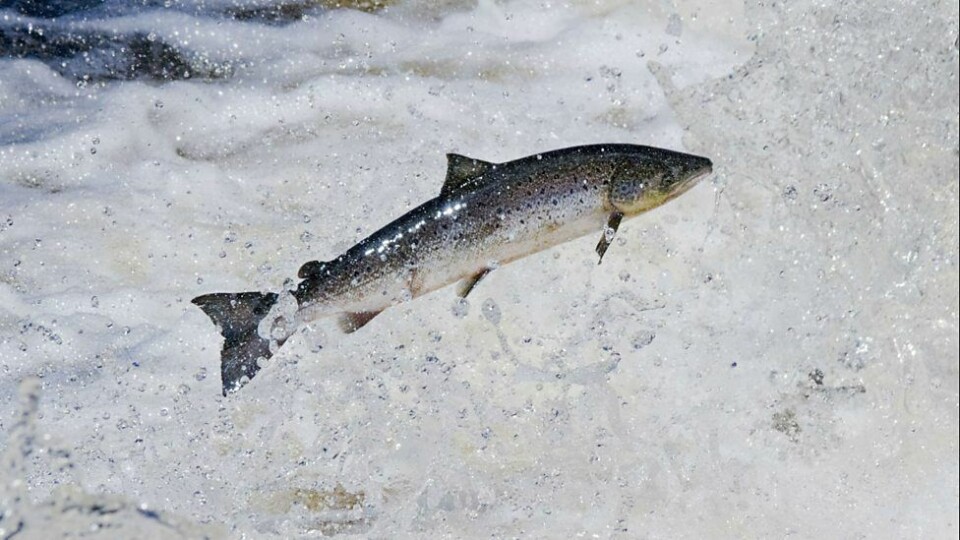
Wild salmon protection zones proposed as part of SEPA rules framework
The Scottish Environment Protection Agency (SEPA) has launched a consultation on plans to introduce wild salmon protection zones that would impose new rules on fish farms operating in those areas.
The environment watchdog said that while the causes of the poor conservation status of wild salmon stocks are due to a range of different factors, sea lice from open-net pen finfish farms “can pose a significant risk to wild salmon populations”.
Under its proposal, permits for all existing farms that it says can contribute to infective-stage sea lice in the proposed wild salmon protection zones would be changed to enable inclusion of conditions that:
- appropriately control the factors determining the number of juvenile sea lice emanating from the farms so that those numbers cannot significantly increase without prior authorisation.
- require sufficient information to be provided about the operation of the farms to enable calculation of the number of juvenile lice hatching from lice on the farms’ fish and the resulting infective-stage sea lice concentrations in wild salmon protection zones. SEPA said this is needed to assess the additive effect of a development proposal on infective-stage lice densities in the protection zones.
New farms
The risk to wild salmon will also be assessed when determining applications for proposed new farms and for proposed increases in the number of fish farmed at existing farms.
SEPA said its proposed initial focus reflects the Scottish Government’s stated priority for a new framework for considering the risk to wild salmon from sea lice when consenting finfish farm developments.
It is also necessary because more information is needed to enable an assessment of whether the operation of existing farms is resulting in a hazard to wild salmon populations. Some of this information will be provided through the implementation of the proposed framework.
Once the framework is established, SEPA will work over the longer term to identify any wild salmon protection zones where the densities of infective-stage lice resulting from the operation of existing farms is posing a hazard to wild salmon populations. In those situations where this is the case, SEPA will work with the operators of the farms concerned to enable them to identify the best means of achieving an appropriate reduction in infective-stage sea lice densities in the relevant wild salmon protection zone.
Worked with scientists
The agency said it has worked closely with scientists from Marine Scotland as well as with NatureScot and local planning authorities to develop a means of assessing the risk to wild Atlantic salmon posed by marine finfish farm developments. The core principles of this work were to use best available scientific evidence; ensure the risk assessments are practical to apply within a regulatory decision-making framework; and make the risk assessment process readily adaptive to additional evidence.
SEPA said that in due course, implementation of the proposed framework will mean that, for the first time, all significant pressures on the water environment from marine finfish farms will be regulated under a single, coherent regulatory framework. This would help facilitate a real step-change in regulation, enabling SEPA to start to provide much more comprehensive spatial advice about the capacity of different areas of the coast to accommodate finfish farm developments, including highlighting where innovation is likely to be needed for development to be approved; and provide the regulatory backing necessary to help simplify local authority decision-making on planning applications.

A national priority
The agency’s chief executive, Terry A’Hearn, said: “Whilst the causes of the poor conservation status of wild salmon stocks are complex and believed to be due to a range of different factors rather than a single cause, we know that sea lice from marine finfish farms can be a significant hazard.
“The protection of Scotland’s wild Atlantic salmon is a national priority which is why, following the Scottish Government confirming SEPA as the lead body responsible for managing the risk to wild salmonids from sea lice from marine finfish farms, and in line with stated priorities, we’re today launching a consultation on ambitious proposals for proposed wild salmon protection zones and a sea lice exposure threshold that applies in these zones.
“We believe the proposals are practical and outcome focused, with phased implementation. Over the coming months we look forward to meeting and hearing views from a broad range of stakeholders with an interest in wild salmon, from community and environmental groups to the aquaculture sector itself before taking a final view in 2022.”
The consultation is open until March 14, 2022, and those wishing to take part can do so here.























































